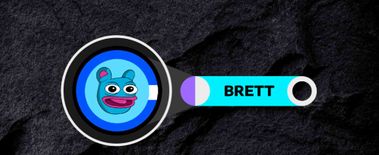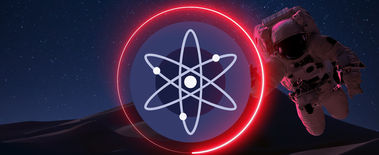As the world heads toward its digital inevitability, one company that will play a large role will be Hedera Hashgraph. A popular enterprise-grade public network, Hedera will last for several reasons, cofounder and chief scientist Dr. Leemon Baird believes.
In 2012 Dr. Baird was working on a math problem, wondering if it was possible for computers to agree on things very fast but also very securely. Even in the cases where malicious influences were involved, could computers still always come to the truly correct decision? After trying several different methods and approaches over years, the answer was always no.
Then in 2015, Dr. Baird looked at a computer’s messaging system, and how when a message was sent to another computer two hashes were added to it. It was an epiphany.
“You could do all of that agreement stuff purely in your head, without having to talk to anyone,” Dr. Baird said. “Everybody would see this complete history of how we had talked to each other and how information had moved through the network and we could actually come to an extremely secure agreement that’s extremely fair, with no communication at all.”
That was the beginning of Hedera Hashgraph, and since then Dr. Baird and cofounder and CEO Mance Harmon have built a network which can process ten thousand transactions per second, multiples more than Bitcoin or Ethereum. That volume, which can easily be scaled, allows them to charge one-tenth of a cent for arbitrary tokens and one hundredth of a cent for those using HBAR, Hedera’s native cryptocurrency. In 18 months Hedera has processed more transactions than Ethereum has in its entire history, Dr. Baird said.
Businesses are sold on Hedera, so much that many have bought into the company. Hedera’s Governing Council includes global titans such as Tata Communications, Boeing, IBM, Google and the University College of London, with each member limited to two consecutive three-year terms. Council members have equal votes in the software direction of thousands of public nodes along with the platform codebase. Hedera’s network and HBAR have a no-fork guarantee, which maintains network confidence and stable development. By spreading its governors over geographies, industries and even time, Hedera is building a truly trustworthy and transparent network, one not subject to the influence of a particular player or sector, Dr. Baird said.
Those are all important factors, but there is also a practical reason these companies have signed on too.
“The real reason they wanted to join is they wanted to build on Hedera. They wanted to be users. They like that it’s fast and secure all at once.”
When we spoke Dr. Baird had recently spoke at Consensus with NBA player Spencer Dinwiddie, who is taking the concept of NFTs in many exciting directions on Hedera. Through his platform Calaxy, Mr. Dinwiddie is enabling influencers to build new avenues of fan experiences on blockchain technology. Fans can receive custom wallets where they store tokens that provide access to exclusive sessions with celebrities and earn loyalty rewards. Personalities can tokenize everything from the shoes they wear a portion of their future earnings.
“That’s the kind of interaction between creators and their public that hasn’t existed before,” Dr. Baird said.
While some with limited knowledge of the space said the technology is still poking at the fringes, some of the world’s largest companies in their sector are taking this very seriously, Dr. Baird said. DLA Piper, one of the biggest law firms in the world, is building tokenization applications for everything from fine art to wine and real estate to stocks and bonds.
“They’re really into setting this up in a way that’s compliant around the world,” Dr. Baird said.
Hedera is working with Medical Value Chain, a Bahrain-based subsidiary of American company AVC Global, who provides the Kingdom of Bahrain with a track and trace platform for global pharmaceutical supply chain compliance.
By developing supply chains on Hedera it is possible to monetize accounts receivable without using a bank.
“It’s a bit beyond what’s existed before,” Dr. Baird said. “If you can automate these things in the ledger it can be very secure and very fast. You don’t need the middle man. You can disintermediate and make it more efficient.”
Central bank digital currencies (CBDC) are another focus, with several global financial institutions on Hedera’s Governing Council. Standard Bank is looking at the technology for currencies across Africa and is researching how to make the American dollar accessible to the ledger. Developers can build directly on Hedera or create their own technology stack and when it comes to agreement layer in Hedera, using any balance of privacy, speed and trust they wish.
Further stability comes from the pegging of HBAR to the US dollar. That provides a predictable cost structure.
“Whether the price of HBAR goes up or down they know this,” Dr. Baird said. “They can predict it and build a business on it. I think it’s incredibly important.”
Hedera’s about doing it better and faster, with “it” being any of many things most of us never think about, Dr. Baird said. Take coupons. When they are redeemed at the store they ultimately end up in large bags destined for a country where people take them one by one and enter their code into a data base. If that same coupon was scanned onto Hedera, there would be instant reconciliation with no chance of double spend.
Online advertising is rife with fraud but it doesn’t have to be, Dr. Baird said. A website can claim they showed an ad and get paid without actually showing it. Run it on Hedera, and you have proof of website, date and time. It’s immutable and permanent.
The socially beneficial applications extend beyonds CBDCs. People in developing parts of the world like sub-Saharan Africa and Central America have no proof of identity, Dr. Baird said. Maintaining such a ledger on Hedera could provide self-sovereign identity to more than a billion people without proof. That opens the door to property ownership, loans and government services.
One project is using Hedera to develop an immutable warning system for people living in areas subject to bombing. Others are storing historical remembrances of the Holocaust on the blockchain. Carbon offsets and pricing can be designed so they easily fit into daily routines. Energy can be traded on a ledger.
From a historian’s perspective it’s fun to look back and determine the tipping point of a movement, that moment where we believe an act or process became big enough that it changed the world. When it comes to blockchain and distributed ledgers, we may be in the midst of it right now, Dr. Baird suggested.
“You’re starting to see …in some sense this was always in its infancy and the whole world of blockchain and ledgers was full of promise that would happen someday. 2021, at least so far, appears to be the year when that promise was fulfilled.
“Still it’s a nascent industry and it’s going to grow a thousand fold or more. It’s still going to reach into every corner of society and the world and the economy and everything. It has a long way to go, but possibly when this revolution is all over and it really has soaked into every part of life and become invisible in many ways, people will look back at 2021, especially early and in a way that was the tipping point. That’s when it came out of the cradle and started actually being used for real world purposes by real world organizations.”








